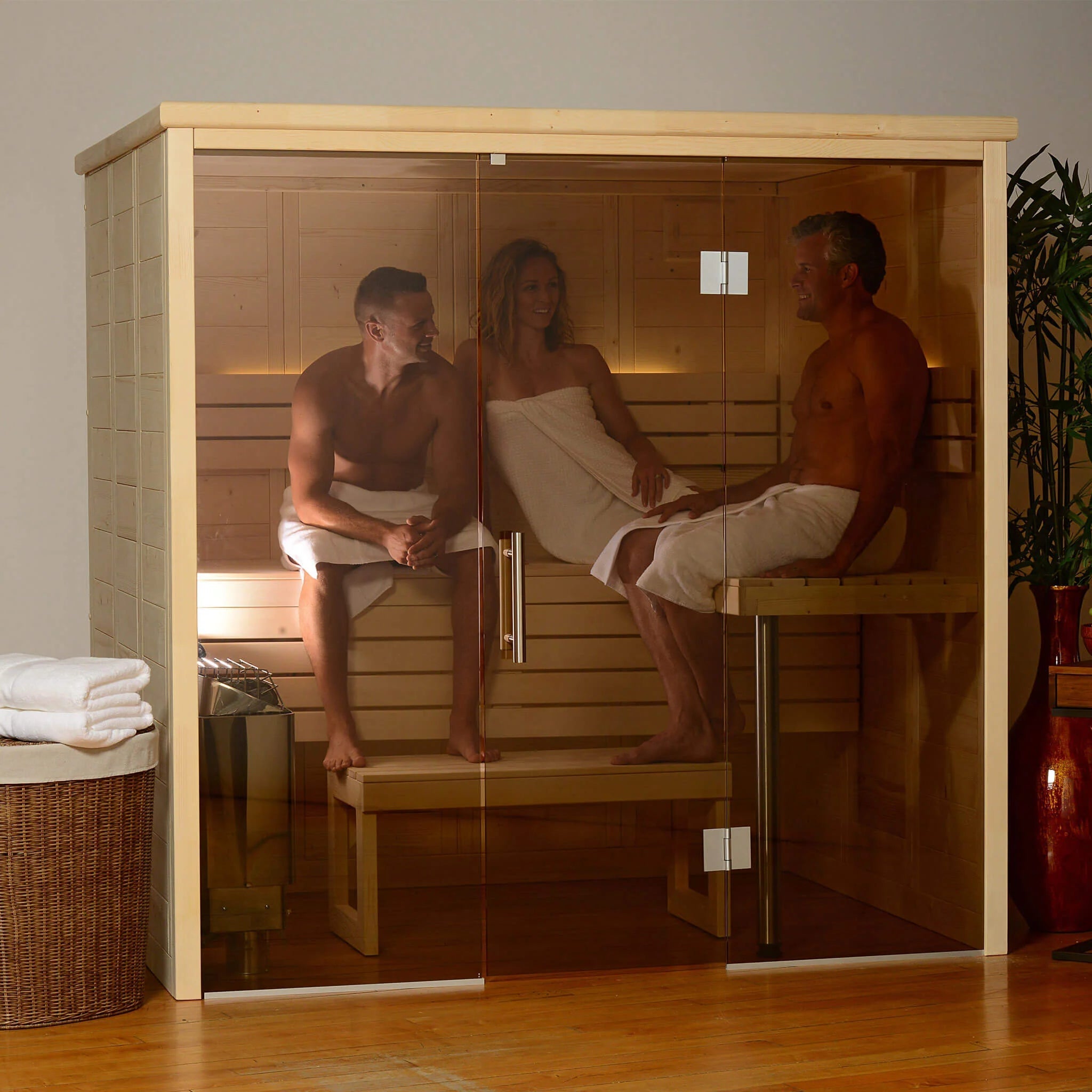Some Known Details About Traditional Sauna
Some Known Details About Traditional Sauna
Blog Article
The 3-Minute Rule for Traditional Sauna
Table of ContentsTraditional Sauna Fundamentals ExplainedA Biased View of Traditional SaunaHow Traditional Sauna can Save You Time, Stress, and Money.All about Traditional SaunaTraditional Sauna - Questions
Most of the weight lost in a sauna is water loss and is re-gained upon rehydrating. Without a doubt sauna can be a crucial component of a healthy and balanced weight loss program. To consider the distinctions in between traditional and IR saunas, I will separate these into verifiable, theoretical, and fabricated differences.Therefore, the most popular factor in the saunawhich is at the ceiling directly over the sauna heateris usually in between 185 and 190 F. Claims that a conventional sauna goes beyond 200 F is merely not true and not relevant for electrical saunas sold in the US. The temperature for a far-infrared sauna is normally set between 120 and 140 F; nonetheless, unlike the standard sauna, the objective in and IR area is not to achieve a heat.

When a standard sauna has actually been effectively warmed, the sauna wall surfaces are warm, the air temperature has accomplished established temperature level and the rocks are extremely heated. As an interesting side note, the warmed walls and the rocks are giving off far-infrared heat, incorporated with the heated air, to develop an "wrapping up warmth".
The smart Trick of Traditional Sauna That Nobody is Discussing
When the high temperature level is accomplished, the elements cycle on and off to preserve the high temperature. A lot of traditional sauna individuals take pleasure in putting water over the rocks to produce steam to increase sauna moisture levels. The advantages of putting water over the rocks include: making the space much more comfy, dampening the nasal flows, and allowing the use of aromatherapy by blending important oils with the water.

When the power gets in the body, it triggers the body temperature level to boost and eventually leads to sweating. In an infrared sauna it is very important for the emitters/heaters to stay on nearly regularly. Considering that there is no mass of rocks to maintain warm, the sauna will cool if the emitters shut off.
Some Known Details About Traditional Sauna
As mentioned above, the sauna bather in an infrared space wants to place himself in front of running emitters to get browse around this site optimal take advantage of the warmth. The heating time for both spaces can be very different, depending on just how the rooms are made use of. For a standard sauna, a bather ought to permit 30-40 minutes for the area to achieve a wanted temperature and to effectively pre-heat the rocks.

A well built sauna will typically accomplish a temperature level of 150-160 F in about 30-40 mins (Traditional Sauna). For hotter temperature levels, the room may require to warmth for a longer period. When the space achieves set temperature, the heating system will cycle on and off, usually running about 50% of the time. The shielded wall surfaces and the heated rocks will certainly maintain the room hot and at steady temperature levels.
To some, 15 mins was "wasted" while the infrared power heated the timber panels instead than warming a body, while others discover a pre-heated room to be extra comfortable and believe an elevated starting temperature level is necessary to start sweating. The size of advised usage for each and every area is approximately the same (10-15 minutes per session); however, due to the lower air temperature levels and the capacity to really feel the results of infrared warmth much faster than a traditional sauna, it is not unusual for an individual to invest an overall of 20-30 minutes in an infrared sauna.
Traditional Sauna for Beginners

The ordinary expense per kWH of electrical power in the united state is roughly $0.11, so a 4.5 kW heating system will set you back roughly $.50 to compete one hour, if the heater runs constantly for one hour. Typically a sauna heating unit will certainly run for 75% of the very first hour and 50% of succeeding hours on because the elements see cycle once the set temperature level is attained.
A 2 person far-infrared area is typically physically smaller sized than a typical sauna, frequently concerning 4' x 4' or smaller sized. The IR heater is generally 1.5-1.7 kW utilizing a useful reference 120 volt 15 amp plug-in service. Because the space can be made use of sooner than a sauna room, we will certainly presume the space is made use of for to of an hour consisting of warm up time.
There is a hardly ever discussed distinction in the social experience in between the 2 spaces. While our culture has lost a few of the social benefit of the conventional sauna experience, it can be very socially fulfilling (Traditional Sauna). From family members time in the sauna, to heart-felt discussions with better halves, to sauna partiesthe typical sauna experience can bring about intimate socializing
Not known Details About Traditional Sauna
The majority of higher end infrared areas include colored light therapy, noise systems and full-glass fronts.
Report this page